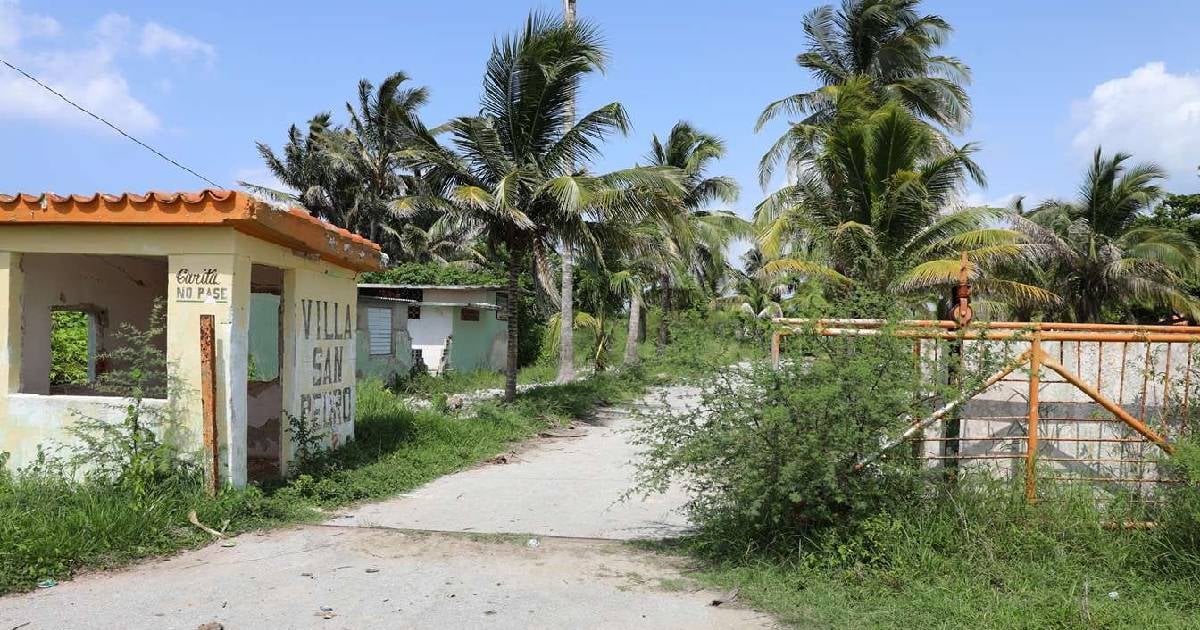The San Pedro campground, situated in Bahía Honda within the province of Artemisa, is succumbing to progressive neglect, threatening its very existence. With only half of its cabins operational, abandoned infrastructure, and minimal services, the facility is rapidly deteriorating due to institutional inaction and vandalism. From an original 70 cabins, only half are functional in 2025, lacking proper conditions.
In the aftermath of Hurricane Rafael in 2024, combined with vandalism, illegal occupation of vacant cabins, and insufficient maintenance, a once popular vacation spot offering affordable holidays has become unrecognizable, as reported by the official newspaper, El Artemiseño. Streetlights remain toppled, children's playgrounds have vanished, and dining services are scarce, despite differing accounts from management and visitors.
"The staff is friendly, yet there are no dining or recreational offerings. The children's park is gone. We cook with electric appliances, but due to frequent blackouts, we resort to alternatives," explained a regular visitor for nearly two decades, who frequents the site with his family. In contrast, Juan Jesús Gamiotea Pozo, who has directed San Pedro for two years, insists that "we have the facilities to provide meals, but campers choose to cook for themselves," although vacationers tell a different story.
Similarly, there is a discrepancy regarding the sale of modules supposedly containing toilet paper, liquor, and other goods, which have yet to be made available. Visitors must even bring their own drinking water due to irregular supply and inadequate sales on site.
The outcome is clear: institutional neglect, inadequate management, and an administrative structure incapable of reclaiming what has been lost. With just one old vehicle, a mere 20 liters of diesel per month, and salaries below 3,000 pesos, the administration admits its inability to do more.
The Broader Impact on Artemisa's Campgrounds
Meanwhile, some families affected by the hurricane have taken over cabins originally part of the Ministry of the Interior (Minint), now managed by the Accommodation Company, leading to looting and unlawful occupancy. The attempts of some vacationers to uphold family traditions cannot obscure the critical state of the site. The situation ominously mirrors that of La Herradura campground, which vanished without a trace. Without immediate intervention, San Pedro risks being erased from the popular tourist map as well.
Back in 2023, Artemisa boasted 310 cabins across seven campgrounds. By 2025, only 242 remain available, 68 fewer (30 of which are from San Pedro), according to Niurka Quintana Pérez, director of Campismo Popular in the province.
In 2024, the state-run press highlighted the decline of Campismo Popular facilities across the island, once a vital source of family entertainment during summer and weekends. Las Tunas’ newspaper, 26, described these facilities as a "sad picture of once-glorious years reduced to filth, decay, and, in some areas, waste."
Historical Context and Current Challenges
Originally conceived by dictator Fidel Castro as a recreational option for Cubans, the Campismo Popular inadvertently emphasized the divide between those who could afford hotels and those who could not. Managed by the Communist Youth Union (UJC), it promoted activities such as beach or river bathing, hiking, and camping.
Many Cubans nostalgically recall visits to these campgrounds during the 1980s and 1990s, while others remember them with resignation due to deteriorating conditions, long lines for food, or transportation difficulties.
In early 2023, as new rates for campgrounds in Villa Clara were announced, Cubans reflected on how this option was intended to be accessible to everyday citizens with limited means. Amidst a deepening energy crisis and severe economic conditions, the Cuban government launched its 2025 summer campaign under the slogan "Always Young," aiming to keep Cubans—especially children and youth—entertained within their communities.
However, the public faces limited options for enjoying the school and work break. Access to campgrounds, for instance, relies on available transportation, and despite assurances from the vice president of Campismo Popular about remaining availability, an 85% occupancy rate and logistical challenges have been reported.
Understanding the Challenges of Artemisa's Campgrounds
What are the main issues facing San Pedro campground?
San Pedro campground is dealing with significant neglect, vandalism, and institutional inaction. Only half of its cabins are operational, and essential services like dining and water are insufficient.
How has Hurricane Rafael impacted San Pedro?
Hurricane Rafael exacerbated existing issues at San Pedro, leading to increased vandalism, illegal occupation of cabins, and further deterioration of the infrastructure.
What role did the government originally intend for Campismo Popular?
Campismo Popular was intended to provide affordable recreational opportunities for everyday Cubans, as an alternative to hotels, under the guidance of the Communist Youth Union.
